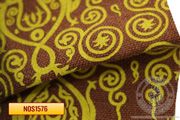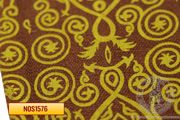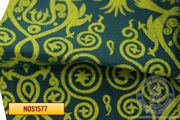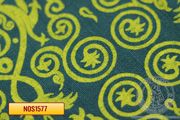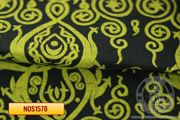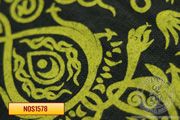If you wish to adjust your cookie preferences for this website, you can do so using your browser settings.
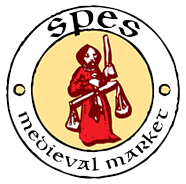


Category: Accessories > Do-It-yourself
Printed linen Hungarian Pheasant
Printed linen Hungarian Pheasant
Century: XIV, XV| CODE | Material |
Standard
|
Price | |
| NoS1576 | see description | Mixed | 27.00 EUR |
|
| NoS1577 | see description | Mixed | 27.00 EUR |
|
| NoS1578 | see description | Mixed | 27.00 EUR |
|
Lowest price in the last 30 days
See how to place an order for several people
The best way to emphasize your medieval outfit is to use printed linen. Printed fabric with a characteristic pattern gives you two options:
- you can freely design an outfit or its element from a material that we will make for you
- or you can order, for example, 2 meters and sew a medieval costume from it on your own.
Both options are highly recommendable!
What does Hungarian printed linen look like?
This fabric has a sophisticated and very rich pattern in which plant and animal themes are mixed. Its main element is a pair of (probably) intertwining pheasants. These animals writhe around their necks, ruffle feathers and crowing to announce their appearance. Grapevines and geometric shapes curl around them. This pattern is quite large and covers a large area on linen.
This seemingly extravagant theme will ensure that you will not go unnoticed at a medieval party.
Printed linen - for civil clothes or a gambeson?
You can use the printed fabric for both everyday and combat outfits. However, we advise that it does not dominate your medieval costume. For example, opt for a doublet half, dress sleeves or a hood lining in such fabric. We know how important a historically-right look is for you, so make the printed linen emphasize your appearance and become the icing on the reconstructive cake.
Our offer includes several colors of printed linen with pheasants:
- NoS1576 - yellow print on red linen
- NoS1577 - yellow print on blue linen
- NoS1578 - yellow print on graphite linen
Pheasant pattern inspired by historical sources
Pattern for creating a print in this shape was a piece of linen fabric from the end of the 14th century, kept at the Museum of Applied Arts in Budapest. However, is it a remnant of medieval clothing? Hard to say. You can look for a forgery here, dating back to the 19th century. As far as the pattern itself is concerned, it is a theme that matches the 14th or 15th century.
What do we know about historical "printing" on linen canvases?
The technique of printing canvases, incl. in the 14th-15th centuries was a very popular method of decorating middle class or court outfits.
Medieval Italian artist Cennino Cennini in his book “The Book Of The Art" presented various techniques of applying paint to various types of materials. Among the topics he touched upon were "The way to work on cloth by printing from a shape in colour".
To create a form for printing, you first had to prepare a block of wood, preferably made of walnut or pear, the size of a brick. On the bottom of the block, a pattern had to be drawn and carved, without omitting any details, but in such a way that it was complete from all sides. Copy block should have a handle. Then, using a special glove, the paint (previously prepared, most often black) was taken and spread over the grooved surface. Before putting the form on the canvas, it had to be stretched strongly on a loom. The printing block was applied very tightly and rubbed with it until the ink was settled on the material. You had to be very careful and precise so that the pattern would not be shifted or that there were no gaps between the fragments.
What is more, to make the final effect more interesting, black was combined with some other color. Most often with yellow, red and green. Using a brush, additional colors were filled in animal figures, foliage or fantastic creatures. This way of decorating was perfect for green, red, black, yellow and blue (and even pale blue) canvases. The most important thing was that the colors should contrast with each other, be lighter or darker (e.g. indigo was used on red material, cinnabar on green, etc.).
However, it was important to produce printed linen “(...) which to your fancy it seems you can put together, and one thing will teach you another (...): every art is in its nature ingenious and pleasing: chi ne piglia se n’'ha (he that takes, hath).”.





 Female Clothing
Female Clothing Male clothing
Male clothing
 Furniture
Furniture Tents
Tents Armament
Armament HMB Line
HMB Line Miscellaneous
Miscellaneous Rent
Rent In stock
In stock Special Offers
Special Offers Search
Search Your Account
Your Account About us
About us Sizing
Sizing How to buy
How to buy Blog
Blog Links
Links Events
Events

